Review: The Upside Bike Carrier is Odd But Effective
Growing up in Australia often meant endless hours cruising highways on the way to a holiday spot that somehow still looked like home. I remember counting cars, caravans and motorbikes, and occasionally, we’d pass a car, typically a flogged Holden Commodore or banged-up Volvo, with an upside-down bicycle tied against the roof, wheels spinning faster than they likely ever had with the bike upright.
Australian company Upside has taken that very concept and made it easy, secure and safe for the bike, the car and you. This is the Upside rack, and simply put, it flips the roof-mounted bike rack on its head. I’ve had one on test for a number of months, and while it’s not without its issues, on the upside (sorry), there’s a surprising amount to like.
Australian company Upside has taken that very concept and made it easy, secure and safe for the bike, the car and you. This is the Upside rack, and simply put, it flips the roof-mounted bike rack on its head. I’ve had one on test for a number of months, and while it’s not without its issues, on the upside (sorry), there’s a surprising amount to like.
UpSide Details
• Key features: Fits most bikes and car crossbars, only installed when needed, folds for easy storage
• Weight: 1.96kg
• Colors: Anodised blue
• MSRP: From $200 AUD (Approx $155 USD / $200 CAD + shipping)
• www.upsideracks.com
• Key features: Fits most bikes and car crossbars, only installed when needed, folds for easy storage
• Weight: 1.96kg
• Colors: Anodised blue
• MSRP: From $200 AUD (Approx $155 USD / $200 CAD + shipping)
• www.upsideracks.com
How It Works
Typically for roof-based bike carriers, you first attach the carrier to the roof rack crossbars (always sold separately), often with bolts, special straps or crossbar-specific tracks. From there, you mount the bike, sometimes without a front wheel in place; other times you clamp the frame, or clamp down onto the front wheel.
While most of these traditional bike carriers can be removed from the car without too much fuss, they’re typically left on. That’s handy if you use them regularly, but if not, they’re left to create drag, and cost you fuel, every time you drive.
Launched on Kickstarter, the Upside rack is different. It still requires the same roof rack crossbars (almost any crossbars work) to be fitted to your car, but the bike carrier is first attached to your bike. Specifically at the saddle and the handlebars. From there you flip the bike upside-down and clip the rack onto the crossbars.
And this is where the Upside holds its most obvious benefit - it’s only installed when you need it. When not needed, it simply folds down to just 62cm long and weighs 1.96kg (4.3lb). By contrast, most roof-mounted bike carriers weight between 6-9kg.
It’s simple to use, too. The Upside holds the handlebars in a rigid straight line to the rear wheel, and it solves the usual faff of keeping the front wheel from tipping while holding the bike above your head.
Not unlike the Thule UpRide (US$220 / AU$369) or Yakima HighRoad (US$229 / AU$349), the Upside fits almost any bike, too. It doesn’t matter what axle type, wheel size or frame shape the bike has, rather the rack touches the same surfaces of your bike that you do when riding the thing. The only limit is the 17kg carrying capacity, meaning heavier downhill rigs are out.
Like other bike racks, the Upside is a per-bike purchase. And you’ll probably only have a use for a single one, too. For example, I found my 760mm wide trail bars took up most of the crossbar length on my Subaru, and the rack requires you to run the bike in a perfectly straight line, so if your crossbars are narrow like mine, then you'll likely be limited to a single mountain bike when using the Upside. Wide crossbars with an overhang or larger cars with more crossbars could probably handle more bikes, but the UpSide is simply not as space-efficient as regular right-side-up racks.
To attach the rack, start by placing the saddle holder on top of the saddle and use the industrial-strength rubber strap to wrap beneath and behind the saddle (I’ll come back to this). Fold out the anodised aluminium arms toward the handlebar (these articulate evenly together) and spread the elasticated handlebar clamps to place them at a wider section of the bars. These clamping surfaces are made from a soft, non-scratch elastomer, but if it’s an option, place them onto the bike’s grips.
Putting the bike on the roof is fairly simple, too, and I was quite surprised to find it easier than any other roof-mounted rack I’ve used to date. Simply place it so the hooks at the handlebar catch one of the crossbars, and then push the rear hook along its threaded rod. From there, there is a torque limiter knob (works like a petrol/gas cap) to secure the rack in place.
Optional Extras
The Upside can be purchased either with or without a lock that secures it to the crossbars for anti-theft purposes. In its simplest, lock-less form, the regular Upside retails for AU$220 (Approx US$155 / CAD$200 + shipping) and comes packaged in a reusable cardboard box.
For AU$275 (Approx US$193 / CAD$250 + shipping), the Upside comes equipped with a surprisingly smart electronic lock that uses a fob system, just like modern building security systems. The lock simply disengages the pawls that allow the rear hook to be tightened/loosened. Once the rack is installed and locked, there’s no easy way to remove it.
I initially had issues with the lock not working, but as the Upside’s lead engineer, Stefan Wrobel, pointed out, there is some smart tech going on that causes a small learning curve. “I have found the lock is not as easy to use at first as I hoped but this is because we dialled back the sensitivity in order to achieve lifetime battery power," Wrobel said. "After getting the hang of it all customers have had no issues with the lock and it’s had 100% reliability in the field.
“To 'wake up' the lock you need to touch [the marked area] with a bare hand as it uses the moisture/sweat of your hand to "wake up", similar to the technology in mobile phone screens. The tricky part here is that the sensitivity is dialled right back so for some people with dry skin, as well as dry and cold climates, it doesn't work as easily. Some have found the need to really squeeze the centre palm of their hands (sweatiest part) against this lobe to get it to wake up the first time. Once it is awake then the key fob will work.”
Following Wrobel’s instructions, it took just a few seconds to hear a quiet motor whir, followed by a beep from the lock – and from there it was working nicely. However, it’s just not as simple as it should be, and I regularly found myself trying to get my ear close to the locking unit to hear if it was working. Thankfully the finicky lock is only needed when you’ll be leaving the bike, and so I didn’t need to fuss with it too much.
With the rack locked to the crossbars, the handlebars are effectively locked in place too. However, running a separate cable lock or similar through your wheels would be a good move if planning to leave the bike unattended for any amount of time.
Finally, there’s an optional blow-moulded plastic case for the rack, something that adds AU$33 (Approx US23 / CAD$30). Beyond the carry handle, I didn’t love the case: it adds significant storage bulk and can be a little confusing to put the rack in.
A soft bag seems like a better option to me, but as Wrobel candidly explained, “our neoprene [bag] prototype wore a hole in six months of use so I changed the design to Cordura, but this became very expensive ... A soft case is definitely one for the future.”
Legitimate Issues
The Upside is clever, and despite my initial hesitation, I no longer fear for the safety of my bikes or car – this thing holds securely. However, there are some downsides to flipping a bike upside-down – and I’m not talking about the stigma of doing so amongst other riders. It’s time to dig into the things you’re currently screaming at the screen.
The most obvious criticism, and perhaps the dorkiest element of this rack, is one of spinning wheels. At higher speeds, in theory at least, the wind forces hitting both the top and bottom of the wheels should keep them relatively stable. And at lower speeds, the wheels aren’t likely to spin any more than if you were riding the bike – the bearings are under extremely little load at this point, too.
Still, Upside now supplies two durable elastic bands (effectively rubber wristbands) for you to lock the brake levers in place if you’re worried about spinning wheels.
Which brings me to the next point – brakes. The simplicity of mechanical brakes leave nothing to worry about, but hydraulic brakes present a potential issue for the Upside.
There is a long-standing myth that hydraulic brakes will introduce air if turned upside-down, but it’s simply not true with modern systems. What is true, though, is that if your brakes already have air in them, then turning the bike upside-down will see that air travel from the master cylinder (the lever) to the caliper, where it can be easily compressed – in turn making your brakes go spongy or worse.
If your brakes are properly bled then the Upside will not cause any issues. However, if you do have air in the system, then it’s likely you’ll get to your ride with less-than-ideal brakes and, of course, that’s not the time to do a bleed. Thankfully a few quick pulls of the brake lever should correct it until you can get it fixed properly, or otherwise, locking those brake levers down during travel with the supplied elastic bands will also keep the air trapped at the master cylinder.
No worries for suspension forks -- turning the fork upside-down once in a while is good practice to get the lower lubrication oil into the upper bushings.
Dropper seatposts are the one thing that still feels a little iffy to me. The rack itself doesn’t put any side loading on the bike, and the upward and downward loads are far less than what would occur from you riding the bike – so that’s all good, too. But so many droppers don’t react well to being pulled up when in a lowered position (it sucks air past the floating piston), and the Upside certainly introduces the risk of accidentally doing this.

The saddle mount has the potential to cause issues with some accessories, but as you can see here, it’s fine with accessories that attach to the rear of the saddle.
Thankfully I didn’t get any issues with my droppers (BikeYoke Revive and PNW Pine), and the Upside team swear they’ve experienced zero issues with this in the years since prototyping the rack. They go as far as to say it’s simply a non-issue. Still, there are no guarantees in life.
For those on uber-soft grips, then just be warned you’ll be gripping directly onto them. I personally experienced no noticeable wear at these usual contact points, but it’s worth noting in case your grips of the same consistency of a half-chewed gummy bear.
Finally, there’s also the nuisance of accessories. Of course, you’ll want to remove anything from your bottle cage, but some saddle-mounted accessories could prove problematic, too. Specifically, accessories that use the rail area of your seatpost, such as traditional saddlebags, will need to be removed to ensure a proper fit of the saddle strap. However, accessories mounted toward the rear of the saddle and away from the post proved fine, such as Backcountry Research or similar straps.
The Drive
Hooking an entire bike to your car with three plastic hooks seems scary, and I was more than sceptical at first. Add in those simple handlebar hooks, and sheesh, I procrastinated plenty before testing this thing.
However, as is often the case, simple design is good design. Those handlebar hooks physically lock into place once installed on the car, and as long as the rack is tight, they’re wedged closed. Similarly, the plastic contact points are built strong, and so many other premium roof racks use similar materials at the mounting points.
The strap that holds the saddle is super beefy, enough to hold my weight, and while it’s a brief fuss to hook into place, it’s better than the alternative of having it accidentally come undone (I still vividly remember an old Thule rack strap on the back of the car coming undone and dropping my beloved first hardtail onto the highway).
Once mounted, squared up to the crossbars, and torqued into place, the rack holds the bike with impressive rigidity – more so than many upright bike racks. You will want to give the bike a good shake to ensure it's tight, and I’ve often found I can get another half-turn or so out of the tightening knob after doing this. Upside goes as far as recommending you check the tightness during your drive.
However, no matter how tight it is, there is still some side-to-side movement at the rear hook, a result of flex from the rack. It’s certainly exaggerated on the ProRack Whispbar racks I’m using, where the thin trailing edge gives extremely little surface area for the Upside’s hook. But while it was concerning at first, I’ve since gotten over it.
That flex is something Wrobel is well aware of. “A small amount of movement around 10-15mm at the sliding hook end is normal and completely OK," he said. "When installed, try moving the bike side to side by holding the bike frame [and] pushing side to side. This is the centre of gravity of the bike and where driving forces will apply as you drive. Pushing/pulling at the rack itself is an impossible force to apply by driving alone. I always do this each time to make sure everything is tight before I drive.
"I have had a few customers who apply double-sided tape to their racks to protect as well as reduce the movement but it is not necessary for security.”
As for potential wear from that movement, Wrobel admits “it will over time make some marks on the roof racks but the roof racks are extruded aluminium which is very hard so I’ve never seen damage – only some cosmetic marking. No need to worry about wearing the Upside parts as I have 1000s of kilometres on the very original rack components.”
Driving around with the Upside got some weird looks. I think everyone is so used to seeing bikes on roofs, but it’s rare to see them upside-down. Beyond the weird looks, I simply didn’t notice the Upside when driving -- it didn’t add any weird wind noise nor a change to handling.
What I did notice though, was the clean aesthetic and lack of wind noise without a bike mounted. All semi-permanent roof racks add a little noise to your car at speeds, and the Upside did none of that while it sat in the trunk.
Pros
+ Simple to fit to bike and car
+ Easy to store when not needed
+ Quality materials used
+ Competitively priced
Cons
- Requires crossbars
- Greedy on roof space
- Fiddly lock
- Needs to be checked for tightness
- You’ll be driving around with your bike upside down
Pinkbike's Take
A version of this review was originally published on CyclingTips.
Author Info:
Must Read This Week
Sign Up for the Pinkbike Newsletter - All the Biggest, Most Interesting Stories in your Inbox
PB Newsletter Signup
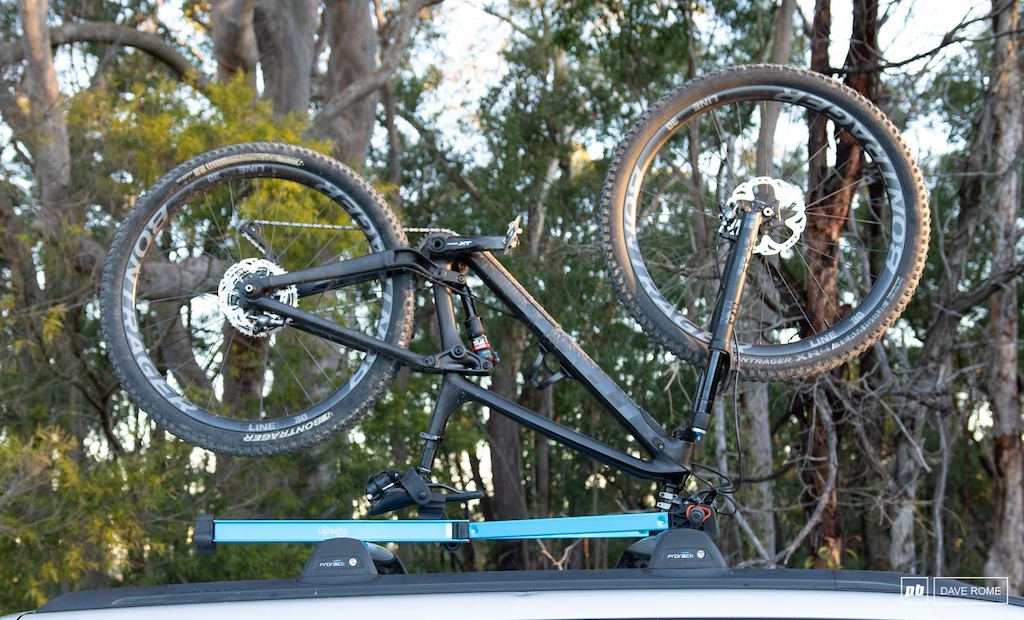

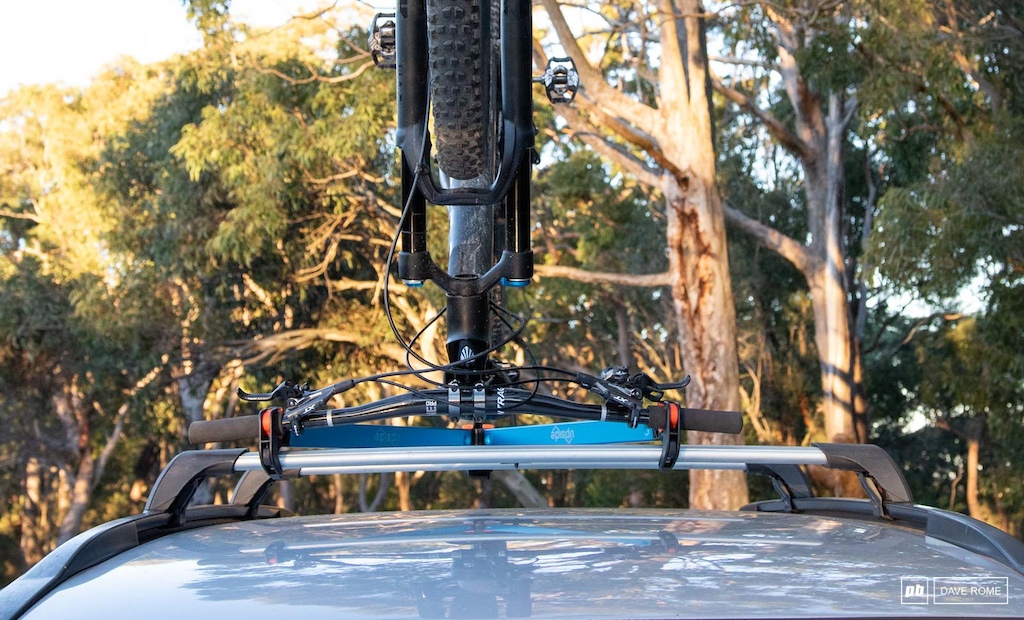


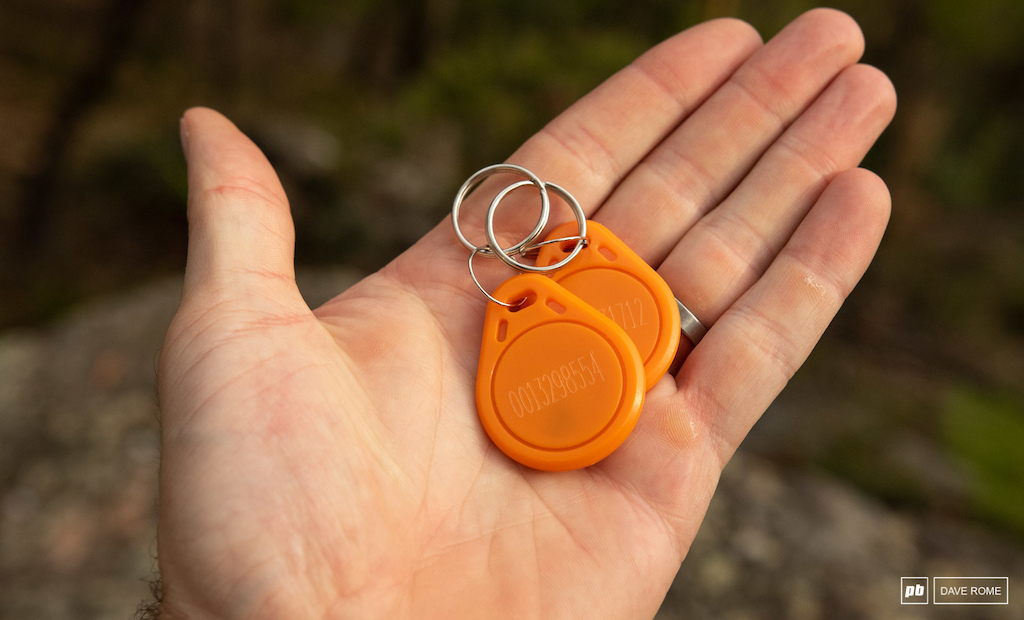
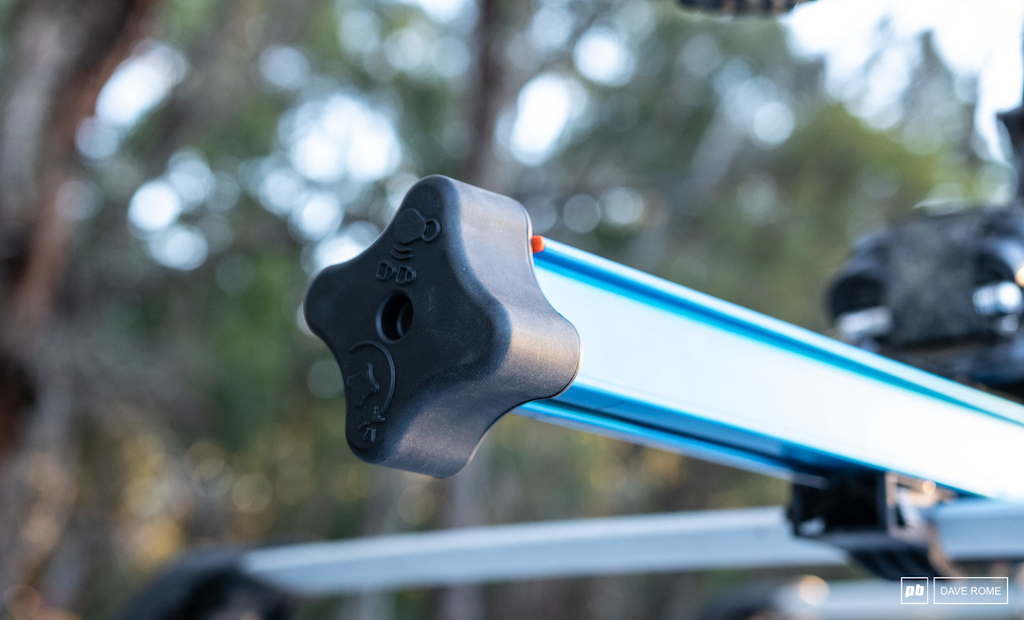
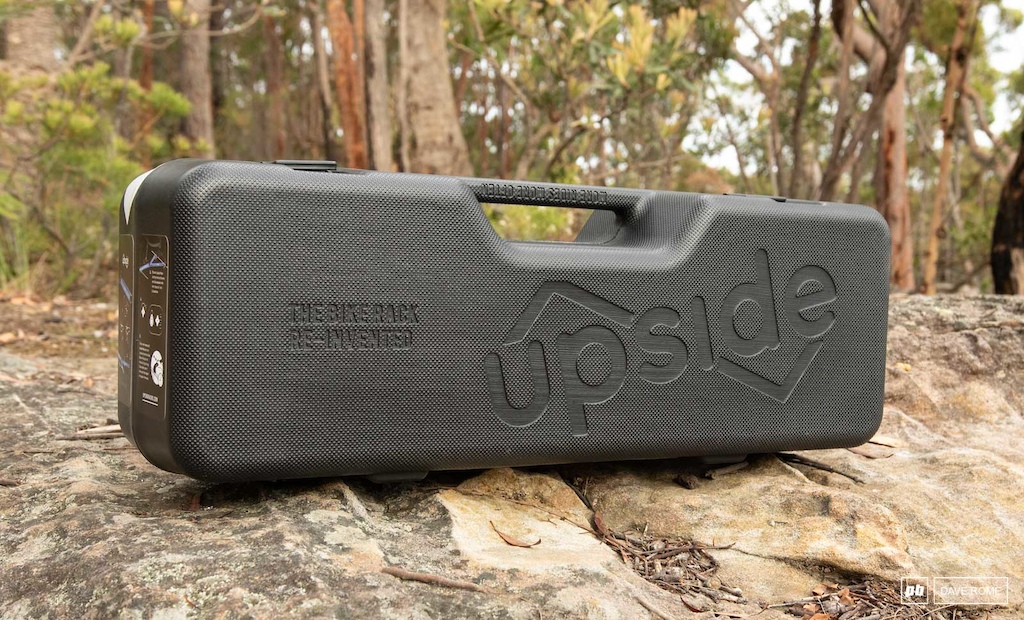

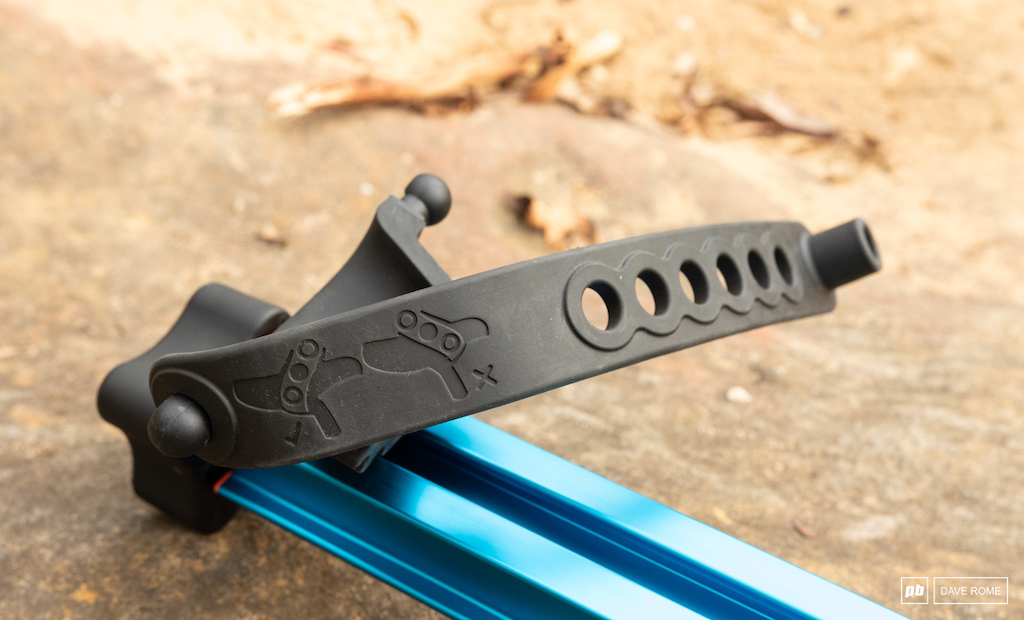


 Member since Mar 8, 2019
Member since Mar 8, 2019
Isn't the lack of any weird wind noise or handling changes the upside?
"Growing up in Australia ", ha
ivtec.bike/produkt/автомобилен-багажник-за-велосипеди-ivtec
Honestly, it is much more stable than the clumsy cheap ones with fixing arms in the "normal" upside position of the bikes, since it has 3-point contact with the roof rails.
the first time i had to put the bike on the rack i realized the coil was in front of it - took the front wheel and brought it in the boot
that night, the braincells responsible for storing AutoCAD experience couldn't go to sleep and I figured all I had to do was to rotate the axles twice - 3 points of contact ( twice at the handlebar and the rear wheel ) and voila !
... by the way.... intellectual property.... you'll be hearing from my lawyer
You should put your bike upside down right before you set off on every ride for a minute or 5 to get the lowers oil where it should be.
I really wanted this rack to be awesome, but in the end it is an awesome idea executed very poorly.
The saddle slid into an oversized sleeve and then the bars dropped into two clamps just inboard of the grips.
Can't find the exact thing but this poor photo gives some idea:http://www.retrobike.co.uk/forum/download/file.php?id=116367
This looks in concept to be a great idea, widen the base of the where you clamp the bike to make it more stable compared to normal racks which support the bike in a single narrow line. That said I have just picked up a Thule 852 (?) and it looks like a solid piece of engineering!
Cool design.
I've got a central exhaust so cant run a tow bar, I've got a couple of Yakima Highroad racks for the roof bars
However the support of the saddle as well as causing damage to the accessories does not inspire me particularly confidence at 130-140 Km/h